
The ankylosaur hylaeosaurus, one of the first dinosaurs discovered, was described and named “Forest Lizard” in 1832. Although paleontology did not exist at the time and scientists did not understand these creatures, the name inspired generations. Envision a big ankylosaurus foraging through the Cretaceous forests, grazing the carpet of cycads and ferns or perhaps rooting and scratching for tubers and roots like many contemporary forest animals such as wild pigs.
Even though later paleontological discoveries of ankylosaurus demonstrate that they were loners, it is possible that during their early development the young armored dinosaurs may have stayed near their mothers until their spikes and clubs could develop enough to defend themselves.
The scene in this demonstration depicts a mother stepping out onto a rise to survey an open glade for danger as morning burns off the woodland mist. Her young charge aims its attention at the curious little mammal that has poked up from a nearby log to see what all the noise is about.


Models of the ankylosaurus are useful to visualize anatomy and foreshortening.
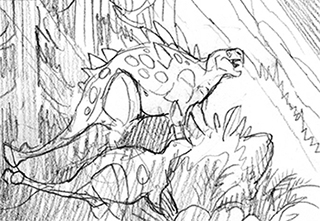
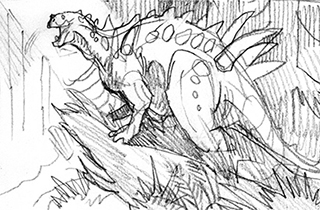
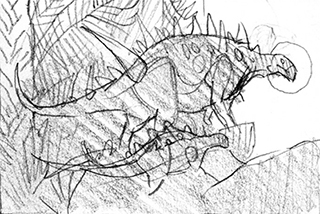
Sketch out a few sample thumbnails to find a setting that works best. I chose the composition on the right for this demonstration.


Begin the painting with a digital sketch of broad, general shapes. Sometimes you have to make several different sketches before a usable image emerges. With digital sketching these changes can be made right in the picture. Don’t be afraid to make mistakes. My initial sketches illustrated a more generic ankylosaurus of no specific species.

Establish the underpainting and basic color scheme. Use broad loose brushstrokes to give the overall image tone, lighting and color. The goal of my color scheme here is to portray the time of day. Here, I have the background roughly detailed for the final painting.
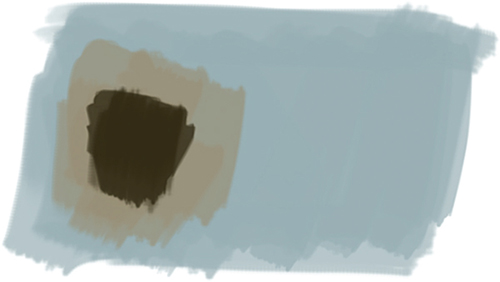
Color Palette
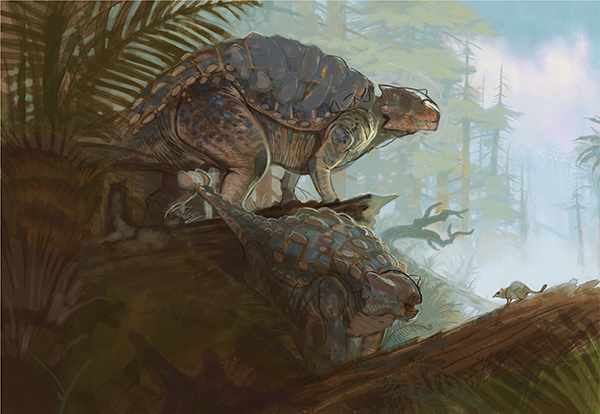
Revisit your paleo reference and refine the animal’s anatomy to more accurately represent an ankylosaurus and not one of its many cousins. At this stage, I’ve made big changes to the shape of the head and body armor such as reducing the height of the spikes.
Start the sketch of the ankylosaurus with large round shapes to establish its silhouette. The internal structure is roughed out with approximations of femurs, joints and the central spinal column.
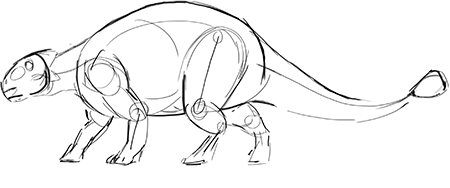
1

2

Once the anatomy has been corrected, move on to the surrounding environment and refine the details of the ankylosaurus in the focal area of the image.

Add details to the framing foreground element. I don’t want these details to compete with my subject so they remain in the shadows and loosely rendered. Only the little rodent is given any real detail, including tiny whiskers.